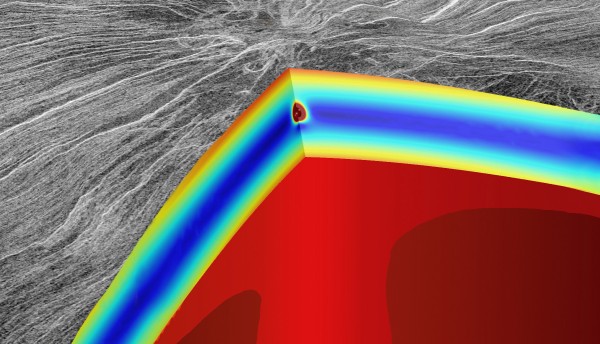NASA’s Planetary Geology & Geophysics program has just announced the group of 2011 proposal submissions selected for funding. I’m excited to report that both of the proposed research projects with which I am involved received full support. A brief description of each project is provided below, and there are multiple opportunities for student involvement.
Three-dimensional Analysis of Ring Fault Initiation and Caldera Formation on the Terrestrial Planets (Grosfils, PI)
The geological records preserved on Earth, Venus and Mars clearly illustrate the considerable extent and magnitude of the devastation that can accompany caldera formation and associated eruption events. There is thus obvious scientific and societal motivation to improve our understanding of the processes that precipitate, and are associated with, caldera formation. Since calderas often form in tectonically complex environments, our goal is to develop, test and apply fully three-dimensional models that can be used to gain insight into ring fault initiation and caldera formation in such settings. (This project advances research begun when I was a Fulbright U.S. Senior Scholar at the University of Auckland, and complements related efforts ongoing with colleagues in OR and TX.)
Growth and evolution of large volcanoes on Venus: Insights from advanced numerical modeling of lithospheric response to volcanic loading (Grosfils, Co-I)
The volcanoes of the planet Venus display a diverse range of sizes, shapes, lava flow distributions, and tectonic signatures, and our goal is to decipher what these data can tell us about the growth and evolution of large volcanoes. To date we have used static elastic models to explore how edifice-induced lithospheric flexure affects the mechanics of magma reservoir failure and magma ascent. By introducing a viscoelastic rheology, in the next stage of our research we seek to understand the time-dependent evolution of the conditions that promote large edifice construction. (This project builds upon results from six years of PG&G funded research (McGovern, PI), and takes the next logical step by moving our research from elastic to inelastic conditions.)

-- model of magma reservoir and plume beneath Mbokomu Mons, Venus (Credit: Dr. Gerald Galgana, LPI)